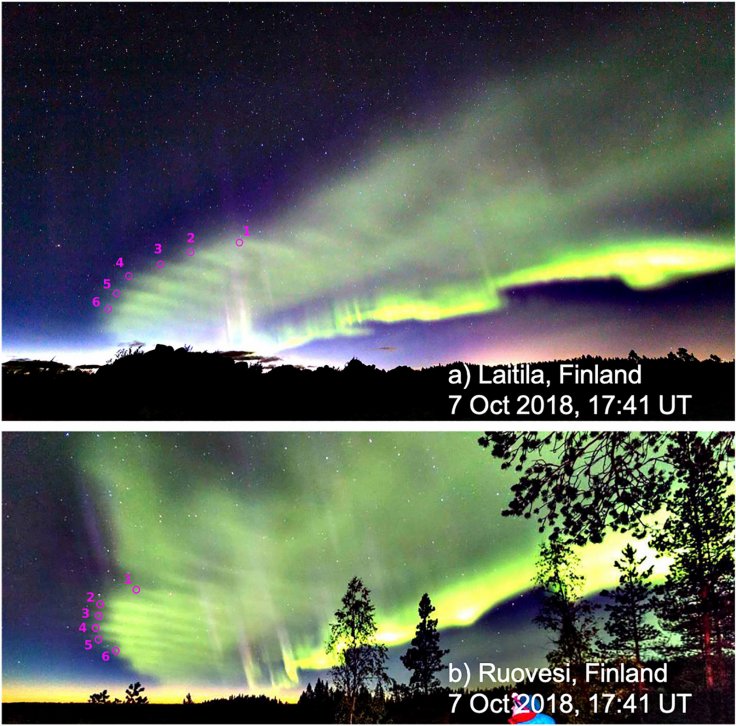The Northern lights, commonly known as 'Aurora' or sometimes as polar lights, are caused by solar winds. The brightest star of the solar system, Sun, sends lots of other energy and small particles towards Earth. When the particles interact with gases in Earth's atmosphere it causes beautiful displays of light in the sky and due to the oxygen, the lights turn into green and red while the nitrogen glows blue and purple.
But University of Helsinki researchers analyzed a few images of the aurora and found them very unusual. They said that this aurora represents a new kind and started a study on these unusual Northern Lights.
Discovery of 'the dunes'
In October 2018, some amateur photographers and aurora enthusiasts captured an unusual beautiful aurora, which was oriented horizontally, reaching across the horizon. They showed these images to the researchers at the University of Helsinki, where it was realized that they had actually observed an entirely new type of aurora.
Later, the citizen scientists named the new auroral form "the dunes." The name was given on the basis of undulating dunes of sand seen in the desert. As per a research paper, published in the journal, AGU Advances the researchers stated that the dunes are nothing but "visible manifestations of undulations of air called atmospheric waves."
The researchers claim that the atmospheric waves are generated by hot air which is being constructed by large objects like mountains that can affect both local and regional temperatures as well as weather. As they are found high in Earth's atmosphere, at 50 to 75 miles above the surface, it is possible that they can affect satellites and spacecraft re-entering the atmosphere.

The new aurora
In a statement, Minna Palmroth, a space physicist at the University of Helsinki and lead author of the study, revealed that "For the first time we can actually observe atmospheric waves through the aurora — this is something that hasn't been done before."
The dunes are believed to have formed in a thin layer at 60 miles above the surface. Considering this altitude, the data scientists believe that they can work out more information about how they formed. While explaining, Palmroth revealed that "Different aurora forms are like fingerprints," and observing the form experts can figure out what is happening in space.
It should be mentioned that the study researcher revealed that this particular atmospheric waves shown by the dunes are a type called mesospheric bores, which are spread horizontally across the sky. As per Palmroth, the bores could be creating heat via the flow of electrical currents, which is a totally new topic.

NASA intern found bizarre Northern Lights
Jennifer Briggs, a NASA intern, who is also a physics student at the Pepperdine University has noticed unusual Northern Lights called foreshock aurora. She detected that the aurora borealis moving in a spiral motion reminiscent of a seashell. The intern spotted the oddly twisting aurora in three-year-old observations from all-sky cameras on the ground in Svalbard, Norway.










